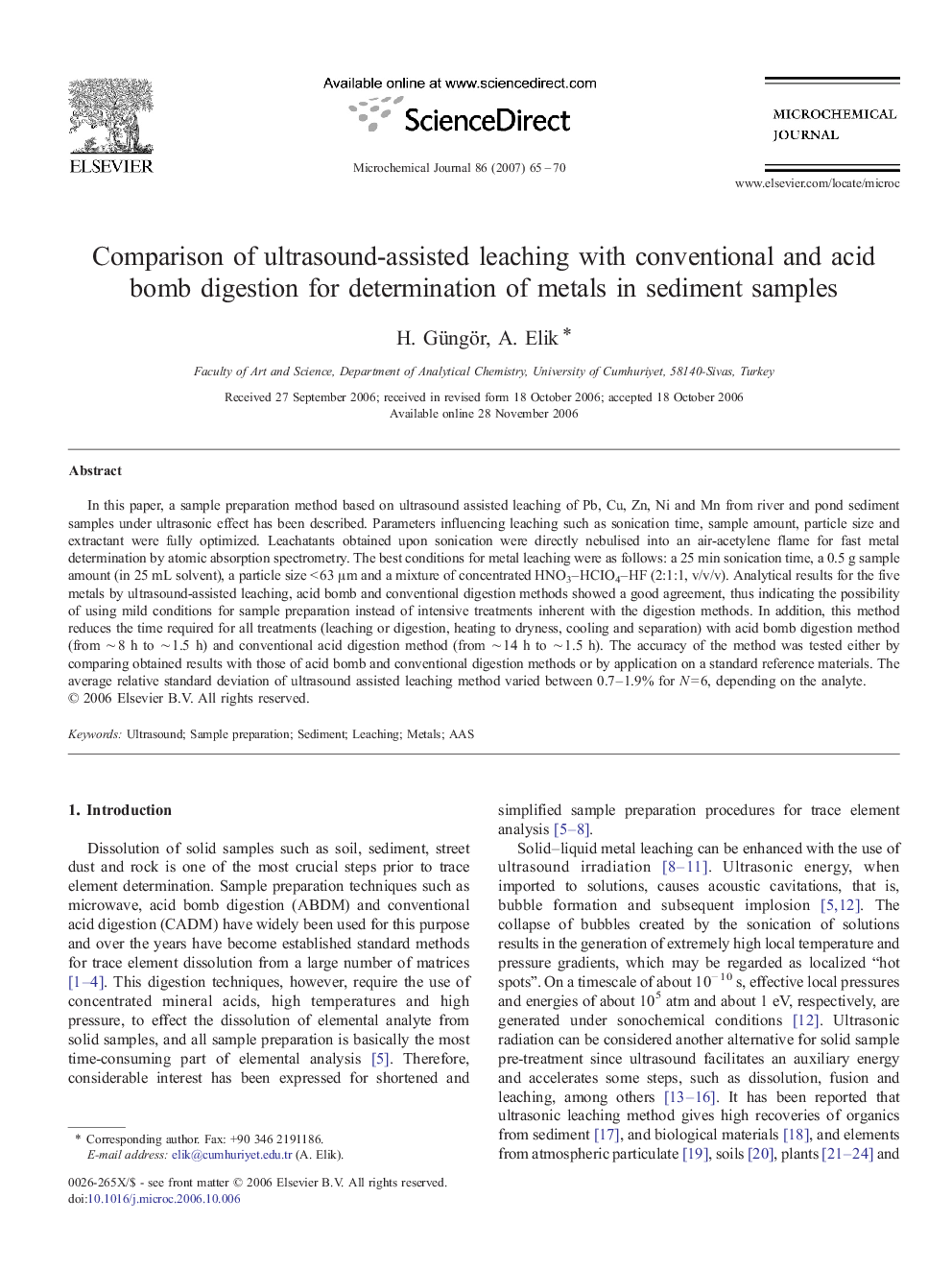| Article ID | Journal | Published Year | Pages | File Type |
|---|---|---|---|---|
| 1228389 | Microchemical Journal | 2007 | 6 Pages |
In this paper, a sample preparation method based on ultrasound assisted leaching of Pb, Cu, Zn, Ni and Mn from river and pond sediment samples under ultrasonic effect has been described. Parameters influencing leaching such as sonication time, sample amount, particle size and extractant were fully optimized. Leachatants obtained upon sonication were directly nebulised into an air-acetylene flame for fast metal determination by atomic absorption spectrometry. The best conditions for metal leaching were as follows: a 25 min sonication time, a 0.5 g sample amount (in 25 mL solvent), a particle size < 63 μm and a mixture of concentrated HNO3–HCIO4–HF (2:1:1, v/v/v). Analytical results for the five metals by ultrasound-assisted leaching, acid bomb and conventional digestion methods showed a good agreement, thus indicating the possibility of using mild conditions for sample preparation instead of intensive treatments inherent with the digestion methods. In addition, this method reduces the time required for all treatments (leaching or digestion, heating to dryness, cooling and separation) with acid bomb digestion method (from ∼ 8 h to ∼ 1.5 h) and conventional acid digestion method (from ∼ 14 h to ∼ 1.5 h). The accuracy of the method was tested either by comparing obtained results with those of acid bomb and conventional digestion methods or by application on a standard reference materials. The average relative standard deviation of ultrasound assisted leaching method varied between 0.7–1.9% for N = 6, depending on the analyte.
